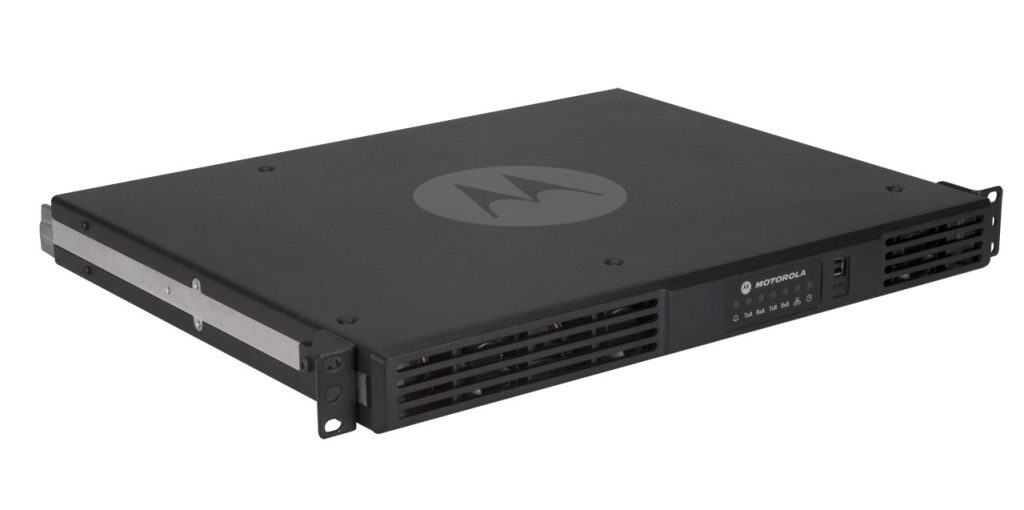In the world of two-way radio communication, staying connected is everything. Reliable and seamless communication is crucial for coordinating construction projects, managing events, ensuring outdoor safety, and maintaining emergency communications.
This is where a reliable two-way radio repeater comes into play. Read on and learn about a two-way radio repeater, its advantages, and how simple it is to set up.
What is a Radio Repeater? A Quick Overview…
First, let’s answer the question, “What is a radio repeater?” Before discussing its benefits or how to set one up.
A two-way radio repeater is a smart device designed to extend the coverage range of two-way radios. Repeaters act as a “go-between” device that receives signals from portable radios. The repeater then amplifies that signal and re-transmits it to the other radios.
This ingenious operation happens in the blink of an eye and is barely perceptible. Seamless and instant communications at the touch of a button.
The Benefits of Using a Two-Way Radio Repeater
Extended Coverage – The primary benefit of a repeater is its ability to significantly extend the coverage range of your two-way radios. For example, say a two-way radio has a transmit range of 5 miles. It can transmit to a repeater 5 miles away. The repeater can then re-transmit to another radio 5 miles away. Effectively, two 5-mile transmissions have been turned into one 10-mile transmission.
Improved Signal Quality – As RF signals travel over long distances, it will degrade, especially if they are analog signals. This can leave you with poor audio quality and communication breakdowns. A repeater will boost weak signals, enhancing the overall audio quality and ensuring clear and reliable communication.
Enhanced Reliability – In critical situations, communication failures can have serious consequences. Repeaters enhance the reliability of your communications. The higher transmission power of the repeater reduces the chances of “drops” and dead zones.
Cost Effectiveness – You can invest in new fleet of more powerful and expensive radios to extend your coverage area or invest in a repeater that lets you use your existing radios and get more coverage and better quality transmissions
Flexibility in Deployment – Two-way radio repeaters are available in various types, from stand-alone stationary units to units integrated into vehicles. These different types allow you to choose the set-up that best works for your situation.
When Cell Phones Fail, Two-Way Radios PREVAIL!
Two-Way Radios – The Ultimate Communication Lifeline
Contrary to what some might believe, two-way radio repeater setup doesn’t require an advanced degree in engineering. With the right equipment, some planning, and a good understanding of repeater technology, setup can be simple. Below is a step-by-step guide to help you set up your own repeater system:
Step 1: Choose the Right Equipment
- Selecting the appropriate repeater and radios is the foundation of a successful communication network.
- Your radios and repeater must operate within the same frequency band.
- Your radios and repeater must be programmable.
- Your antenna must be appropriate for the purpose which you intend to use it.
Step 2: Determine Repeater Antenna Placement
- The location of your repeater antenna is critical.
- It should be as near as possible to the center of your desired coverage area.
- It should be as near to the repeater as the environment allows. The signal degrades as it travels through cables and connectors.
- You should place your antenna at a high point in the coverage area to ensure maximum signal propagation. The higher the antenna, the lesser the effect of the curvature of the earth.
- If possible, choose a location with minimal obstructions, such as tall buildings or dense foliage.
Step 3: Install the Repeater
The installation process generally involves mounting the repeater in a secure and accessible location. Follow the manufacturer guidelines for proper installation. Make sure all power and antenna connections are secure and properly grounded to ensure optimal performance.
Step 4: Configure the Repeater
Modern repeaters often come with user-friendly software that help simplify configuration. Use the software to set parameters such as frequency, tone settings, and power levels. Configuring the repeater ensures it will work with your existing radios.
Step 5: Test the System
Before deploying the repeater for regular use, …test, test, test, test! Make sure all handheld and mobile radios can communicate throughout the coverage area. The testing phase identifies any holes or shadows in the coverage. You can then deal with them before going live.
Step 6: Train All Users
Even with a well-designed communication system, users still have to know how to operate the system. Provide training to all users on how to operate the radios in conjunction with the repeater. Emphasize best practices to ensure clear, concise communication and avoid unnecessary signal congestion.
Wireless Solutions From The Trusted Technology Partners
When it comes to reliable wireless communications, RCS Communications is unmatched. RCS Communications is the leader for wireless solutions for organizations and public service agencies throughout Kentucky and Indiana. At RCS Communications, they offer high-performance and robust telecomm solutions from many of the industry leading manufacturers.
RCS Communications’ clients require dependable and innovative systems. These systems should achieve their business or agency objectives. Additionally, they should improve efficiency, productivity, safety, and teamwork across multiple locations.
RCS Communications offers an extensive portfolio of products from leading technology partner. Their portfolio includes video surveillance systems, rugged Motorola two-way digital radio communication solutions, and Avtec IP based dispatch consoles. It also includes GPS vehicle tracking systems, fleet management tools and more.
RCS Communications’ team of experts will work closely with you to determine the best solution for your business or agency.

